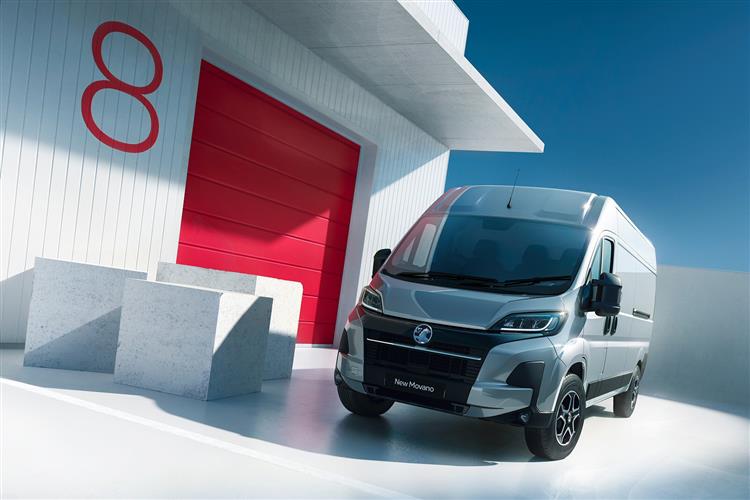MOVING ON (some text hidden) --NONE--
By Jonathan Crouch
Vauxhall revitalises its Movano large van - with a little help from its French cousin brands. Jonathan Crouch takes a look.
Ten Second Reviewword count: 48
Until now, large vans have often been pretty far behind the curve when it comes to technology, but Vauxhall's Movano has now caught up. For the first time, there's a credible EV version - and even hydrogen power. Plus a smart new look and a properly car-like cab.
Backgroundword count: 167
Vauxhall's largest van, the Movano, has come in many different forms since we first saw it in 'Movano A' form back in 1998. Both that design and the replacement 'Movano B' (which arrived in 2010) were based on a Renault Master. But with Vauxhall's takeover by the French PSA conglomerate (now part of the Stellantis Group), this design switched in 2022 to the same one used by Peugeot, Citroen and Fiat. But those underpinnings were in dire need of a technological update, even in the full-electric model that joined the range at the same time. In short, this new era Movano needed thoroughly bringing up-to-date - which is exactly what's happened as part of the far-reaching package of improvements announced with this model at the end of 2023. Almost everything we roundly criticised before - the old-fashioned cab design, the EV version's feeble range and performance, plus behind-the-curve standards of media and safety; it's all been addressed. Time to consider the Movano in a completely new light.
Driving Experienceword count: 285
Diesel versions of this improved Movano continue with the same PSA Group-derived 2.2-litre unit you'll find in its Peugeot, Citroen and Fiat Stellantis Group cousins, as well as in the Toyota Proace Max. This is available with a range of power outputs, from 140PS to 180PS, and can be combined with 8-speed automatic transmission. This Movano Electric uses a big Stellantis-derived 110kWh battery which now takes this LCV 260 miles between charges (105 miles further than the previous 75kWh model). It powers an electric motor putting out 270bhp and 400Nm of torque - though you only get that with the fastest of the three available drive settings ('Power'). The default 'Normal' mode restricts this Vauxhall to 217bhp, while the 'Eco' setting you'll need to get anywhere near the quoted driving range figure restricts you to just 163bhp. There are four selectable levels of brake regeneration, which are operated by paddles behind the steering wheel. Bear in mind that as usual with EV vans, the range figure will drop off quite a bit if you've a full load out back. This EV model's under-floor battery positioning results in a low centre of gravity, improving cornering and stability even when fully loaded. The electric power steering now automatically adjusts the assistance to the speed of the vehicle. This increases driving comfort at higher speeds and makes manoeuvring in the city more comfortable. There's now an electric parking brake, activated via a switch on the instrument panel to the left of the steering wheel. Those who want to travel long distances locally emissions-free and also need to refuel quickly can talk to their dealer about a Hydrogen version which will offer a range of up to 311 miles.
To see the full road test text contact us on 0330 0020 227
Pictures (high res disabled)

.jpg)
|
.jpg)
|
Statistics (subset of data only)
Min |
Max |
|
Price: |
£33,390.00 (At 19 Dec 2024) |
£68,070.00 (At 19 Dec 2024) |
Electric WLTP-Rated Driving Range (miles): |
260 |
|
Power (ps): |
140 (Turbo D) |
279 (Electric) |
Scoring (subset of scores)
Category: Vans
| Performance | |
| Handling | |
| Comfort | |
| Space | |
| Styling, Build, Value, Equipment, Depreciation, Handling, Insurance and Total scores are available with our full data feed. | |



